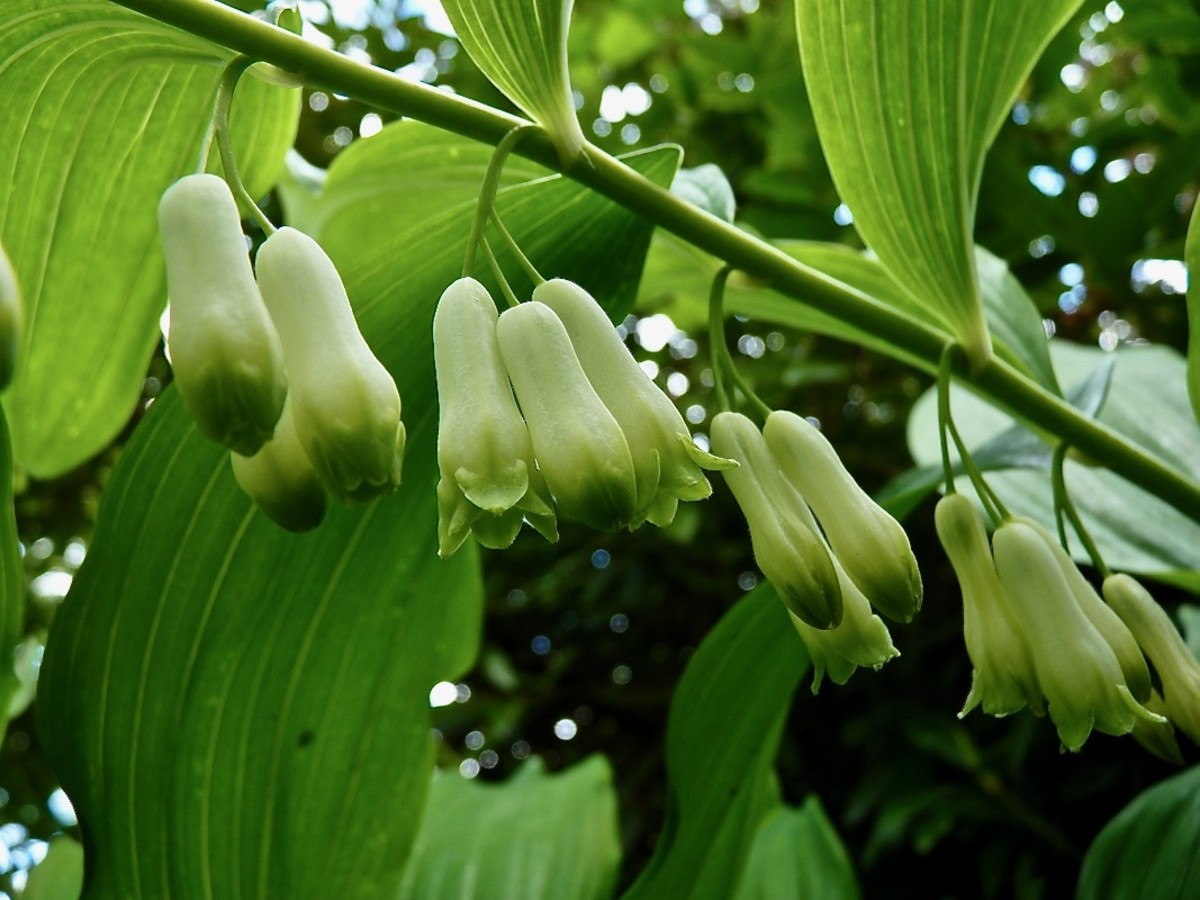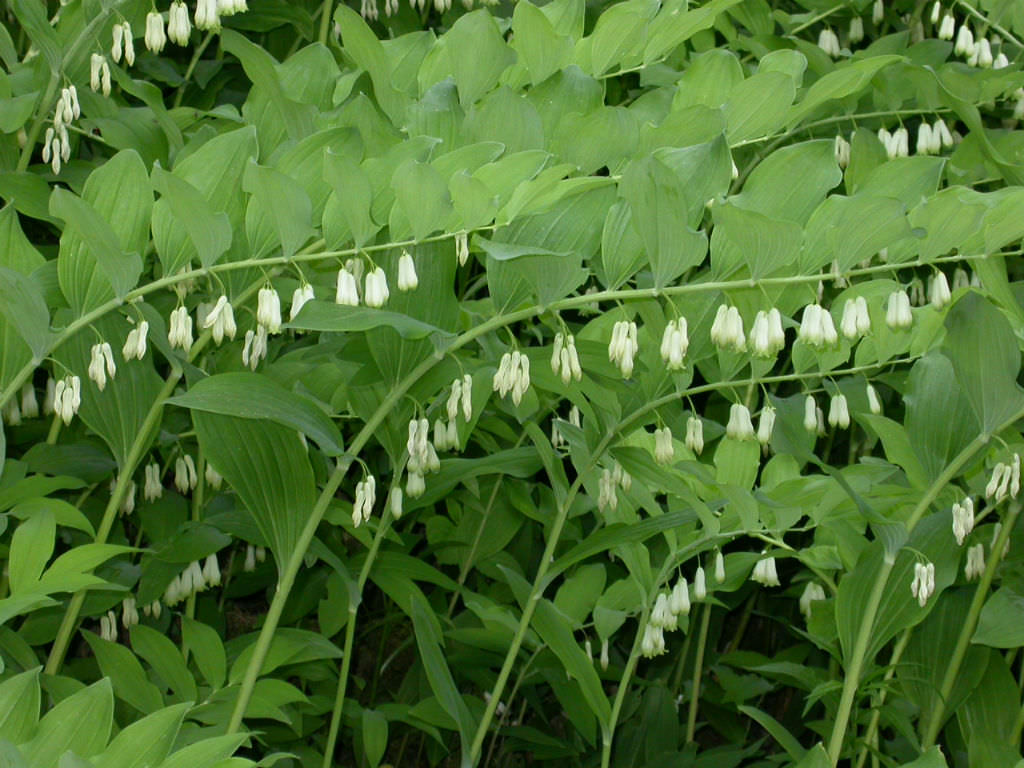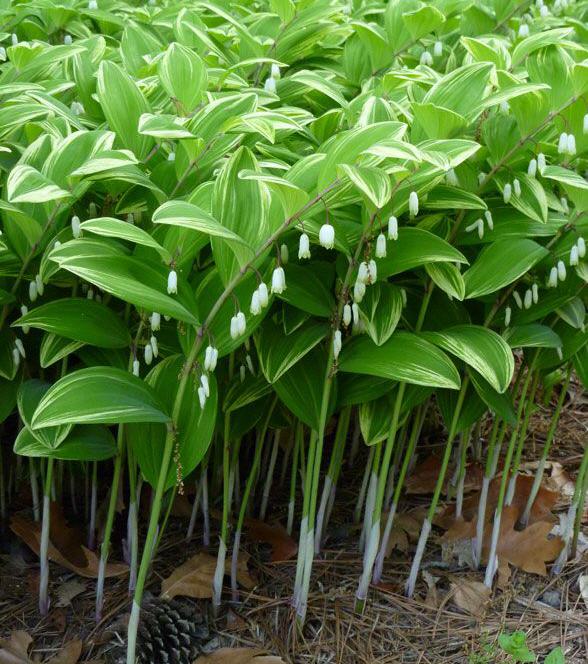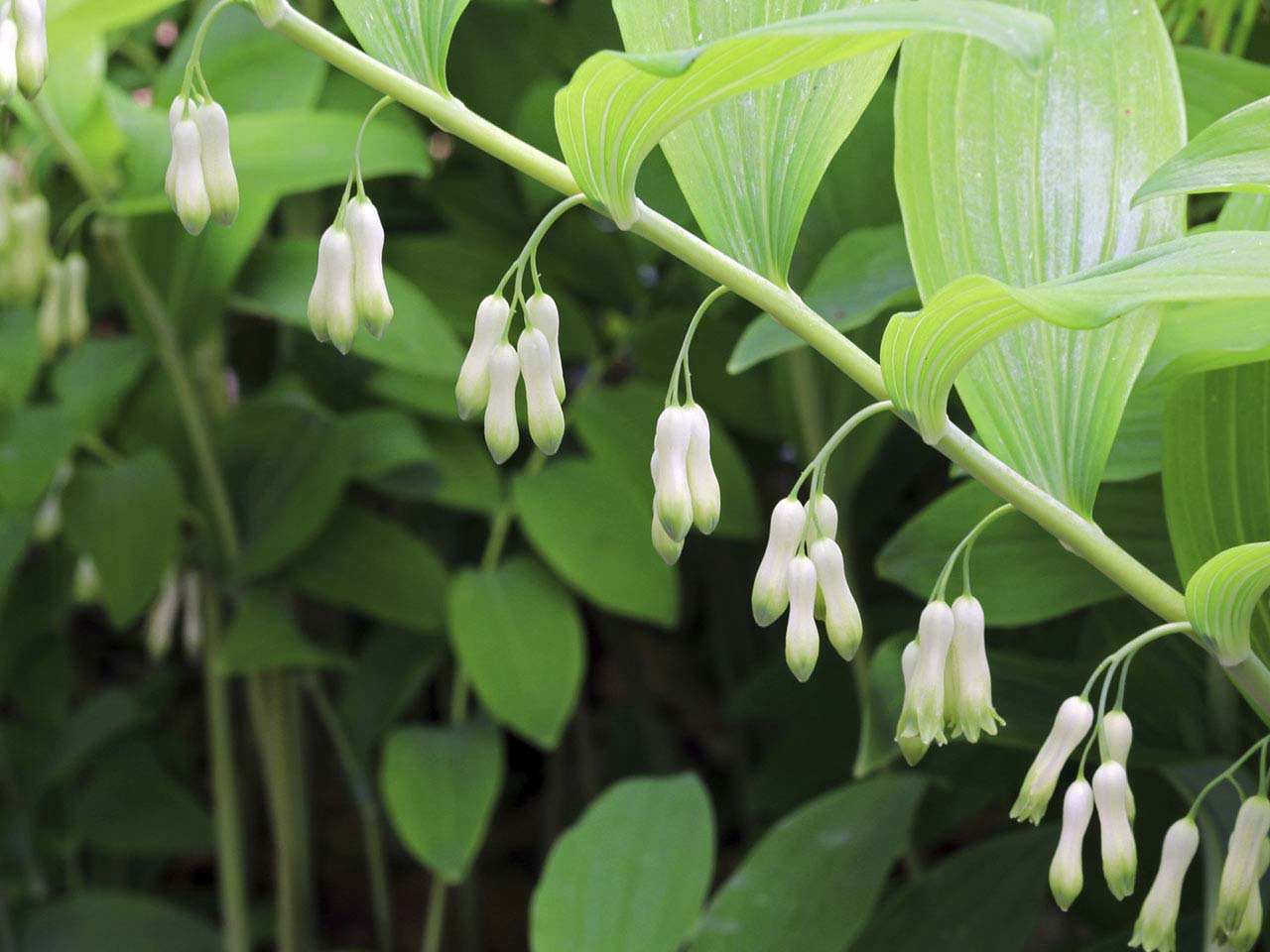
Guide to Solomon's Seal How to Grow & Care for "Polygonatum"
Plant Care: Solomon's seal can grow well in shady areas near tree roots, and the fallen leaves should be left to form a natural mulch and eventually humus. Solomon's seal prefers occasionally wet to moist, well-draining soils, but the plant can also tolerate drought once it has become well established. Division is recommended in the early.

Solomon’s seal PlantLore
Solomon's seal is a distinctly attractive perennial for the shade with pretty white flower bells. This is how to plant and care for it. Profile of Solomon's seal: Scientific name: Polygonatum multiflorum Plant family: asparagus family (Asparagaceae) Other names: David's harp, ladder-to-heaven, Eurasian Solomon's seal Sowing time: autumn

How to Grow and Use Solomon's Seal Dengarden
The variegated and green species of Solomon's Seal plants are considered True Solomon's Seal. They are used in Chinese herbalism and known as "yellow essence". Depending on the species, these plants can grow between 6 and 7 feet (1.8-2.1 m) tall when they reach maturity. However, some species can measure up to only several inches.

Polygonatum multiflorum (Solomon's Seal) World of Flowering Plants
The Solomon's Seal, Polygonatum multiflorum is a shade loving, deciduous perennial that produces large, slow spreading clumps of arching, three feet stems lined with pairs of bright green leaves. In late spring, clusters of 2-5 elongated bell shaped, greenish-white flowers will hang beneath each pair of leaves. Growing Requirements for Solomon's Seal Plants

Variegated Solomon's seal Garden Housecalls
Polygonatum biflorum, known as Solomon's Seal, or King's Solomon's Seal grows 6″-2′ tall (15cm-60 cm), and generally occurs in deep woods, forest edges, and open woods. It is the most common native Solomon Seal. [2] Polygonatum biflorum var. commutatum, is known as Giant Solomon's Seal is native to most of North America East of the.

Solomon's Seal Planting And Care
Varieties of Solomon's seal to grow Where to grow Solomon's seal Polygonatum x hybridum Grow in any fertile, humus-rich and moist soil. Solomon's seal is a woodland plant so does best in dappled, partial or full shade. It will grow in sun but strong midday sun in summer may scorch the leaves.

variegated solomon's seal photo by Cindy WintJohnson Plants, Shade garden, Garden plants
Solomon's Seal Care Solomon's seal plants are native to woodland areas, so they prefer to grow in a spot with some shade and dampness. Gardeners usually start their plants with transplants or rhizomes (underground stems that produce new plant shoots). Solomon's seal does not require deadheading (removing spent blooms).

How to grow Solomon’s Seal Saga
Growing Solomon's seal in varied conditions. Though a moist, shady location is preferred for Solomon's seal, most kinds except P. humile are adaptable enough to be grown successfully in hot, dry climates, if gardeners are attuned to the plants' needs. In high-desert areas of Idaho and Utah, where August brings strong, dry winds and temperatures.

Solomon's Seal Planting And Care
Above: Smooth Solomon's seal is Polygonatum biflorum and occurs natively in North America east of the Rockies. It has solid green leaves and flowers hanging in pairs (biflorum is horticultural speak for "two flowers").Unlike many spring flowering plants, which begin to look peaky as summer progresses, Solomon's seal remains handsome all season long, its stalks firm, its leaves perfect.

Solomon's Seal Growing How To Plant Solomon's Seal
Solomon's seal can be grown from seed but it can take up to 2 years to germinate. You will need to alternately cold stratify and warm stratify the seeds. Harvest the seed when the berries have ripened. Mash up the berries and soak them overnight. The seeds will fall to the bottom of the bowl.

Solomon's Seal Buy Online Breck's
True Solomon's seal plant reaches 12 inches (31 cm.) to several feet (1 m.) in height, blooming in April through June. White bell-shaped blossoms dangle below attractive, arching stems. Flowers become bluish black berries in late summer. The attractive, ribbed foliage turns a golden yellow color in autumn.
:max_bytes(150000):strip_icc()/solomons-seal-1402856-08-394bc3c6c637446786197fbba7c9a89d.jpg)
How to Grow and Care for Solomon's Seal
Thanks, Nithya. Solomon's Seal has beautiful foliage and does not need much care. Nithya Venkat from Dubai on November 16, 2018: The Solomon Seal seems to be a great plant with beautiful blooms. It is a low-maintenance plant. The True Solomon's seal is a great choice for a garden, thank you for sharing.

Polygonatum odoratum (Angular Solomon's Seal) World of Flowering Plants
Solomon's seal is the common name for a number of species in the genus Polygonatum with an attractive architectural form. The rhizomes of various species have been used medicinally to treat various ailments or ground and baked into a type of bread, and the young shoots were eaten like asparagus.
The Year of the Variegated Solomon’s Seal Plant Something Oregon
Solomon's seal is a classic shade garden plant that adds an architectural component to garden beds, thanks to its arching stems. In spring, the stems are lined with small, bell-shaped, white blooms. These blossoms later give way to bluish-black berries that wildlife love.
/solomons-seal-1402856-04-f327de176f2348a49c841b4950860f14.jpg)
How to Grow and Care for Solomon's Seal
Solomon's Seal (Polygonatum spp.) is a captivating plant that offers not only aesthetic appeal but also medicinal benefits and cultural significance. Its graceful arching stems, pendulous flowers, and unique rhizome markings make it a popular choice for gardeners and nature enthusiasts.

Beauteous Solomon's Seal.... The native version..... Perennial garden, Plants, Perennials
By: Vineta Jackson Published: January 30, 2023 - Last updated: May 22, 2023 Solomon's seal is a gracefully arching plant with small bell shaped flowers in spring. Learn how to grow Solomon's seal in your garden! Solomon's seal is an excellent choice for open shady garden areas.